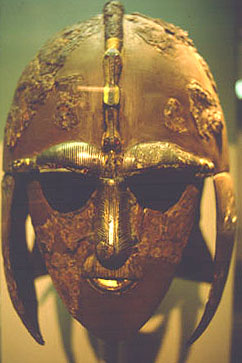Difference between revisions of "Template: Popular article 04 17" - New World Encyclopedia
From New World Encyclopedia
| Line 1: | Line 1: | ||
{{Main page article box| | {{Main page article box| | ||
type=Popular| | type=Popular| | ||
| − | title= | + | title=Sutton Hoo| |
| − | image_name= | + | image_name=Sutton.hoo.helmet.JPG| |
| − | image_desc= | + | image_desc=Ceremonial helmet from Sutton Hoo| |
| − | text= | + | text='''Sutton Hoo''', near [[Woodbridge, Suffolk|Woodbridge]], [[Suffolk]], [[England]], is the site of two [[Anglo-Saxons|Anglo-Saxon]] [[cemetery|cemeteries]] of the sixth and early seventh centuries. One contains a [[ship burial]], a rare occurrence in England, including a wealth of artifacts of outstanding [[art]]-historical and archaeological significance. |
| − | + | }} | |
| − | |||
Revision as of 16:25, 29 December 2020
Popular Article: Sutton Hoo
Sutton Hoo, near Woodbridge, Suffolk, England, is the site of two Anglo-Saxon cemeteries of the sixth and early seventh centuries. One contains a ship burial, a rare occurrence in England, including a wealth of artifacts of outstanding art-historical and archaeological significance.
